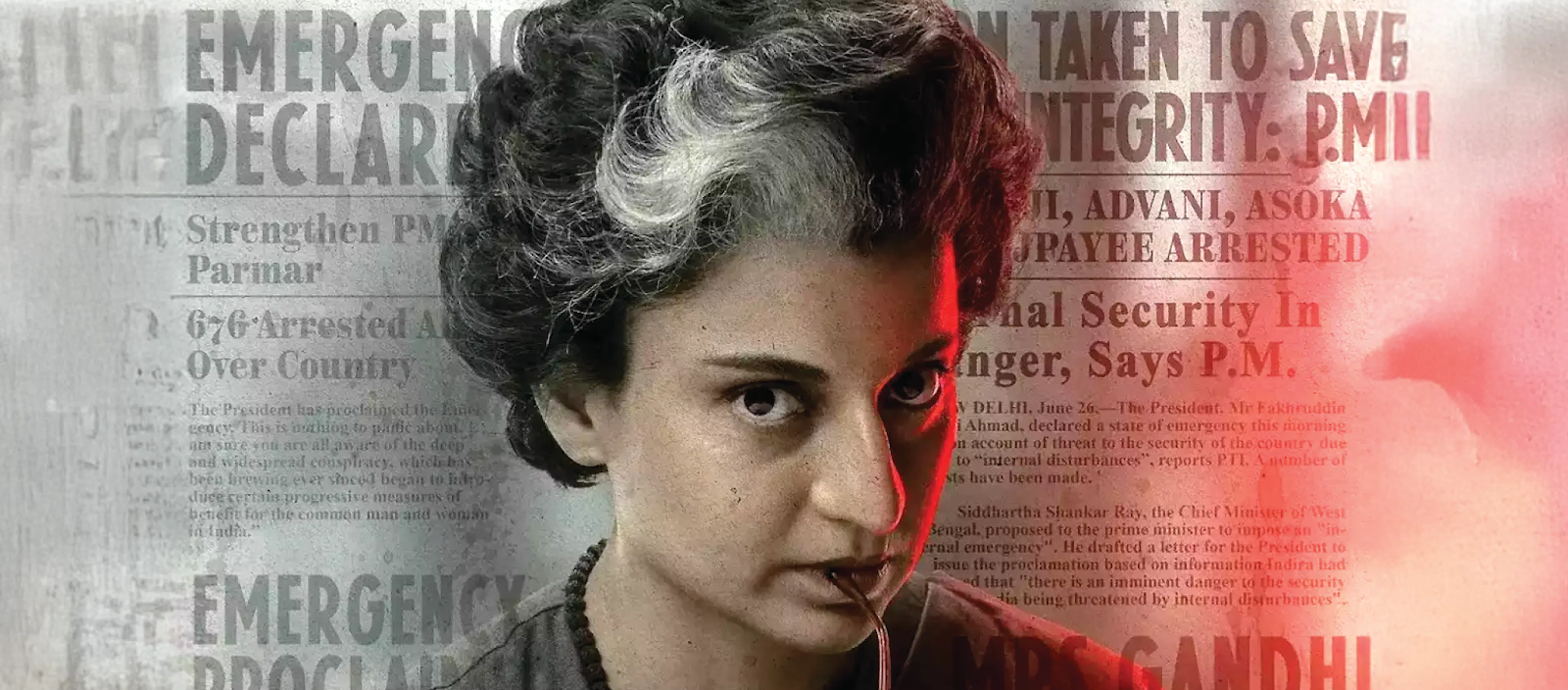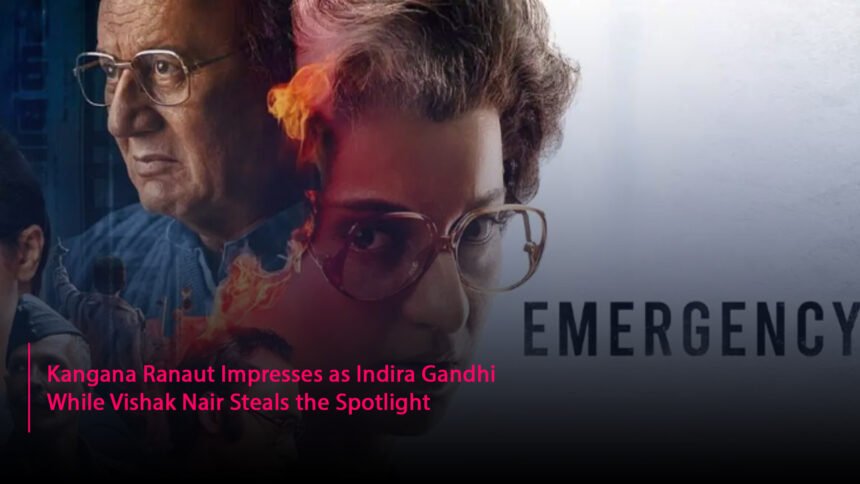When I stepped into the theater to watch Emergency, one thing immediately caught my attention—Kangana Ranaut’s prosthetic nose, designed to resemble the late Indira Gandhi. Paired with the occasional, seemingly involuntary facial movements, it set the tone for what I suspected was going to be a performance leaning toward caricature rather than authenticity.
(Interestingly, Priyanka Gandhi reportedly responded with a lighthearted “Okay, maybe” when Kangana invited her to watch the film. [Also read for more context.])
The story gradually takes a turn, presenting Indira Gandhi as a leader driven by an insatiable thirst for power. Emergency delves into the idea that her relentless need for control ultimately became her undoing. Kangana portrays Gandhi as someone plagued by insecurities about her position, willing to go to great extremes to maintain her authority. The film emphasizes the famous phrase, “India is Indira, and Indira is India,” as a defining aspect of her mindset and character.
Kangana seems well aware of the potential controversies her narrative might spark. To address this, the film strategically includes scenes that attempt to balance its critical perspective. For example, Indira Gandhi is depicted looking into a mirror, acknowledging her flaws but opting to call herself a “woman” instead of something harsher. These moments, paired with scenes showcasing her kindness, appear designed to soften the critique and diffuse possible backlash. While skillfully done, the intention is quite evident.
Interestingly, despite its title, Emergency doesn’t focus solely on the 1975 declaration of emergency rule. Over its 2-hour-28-minute runtime, the film ambitiously explores a wide spectrum of Indira Gandhi’s life—her rise to power, major political decisions, and eventual downfall. It even touches on events like the release of Bhindranwale for political advantage, Operation Blue Star, and her subsequent assassination. However, this expansive scope leaves the narrative feeling scattered, as no single event receives the attention or depth it deserves. The screenplay lacks a clear focus, diluting the overall impact of the story.
A key element of the film is the relationship between Indira Gandhi and her son, Sanjay Gandhi. Sanjay is portrayed as the stereotypical “entitled son of a powerful family,” whose actions significantly influence many of his mother’s controversial decisions. The film suggests he was the driving force behind much of the chaos during the Emergency, including forced evictions and atrocities in Delhi. His disdain for Indians, seemingly shaped by Western ideologies, adds complexity to his character. Ultimately, Sanjay emerges as the central antagonist in Kangana’s depiction, often overshadowing even Indira herself.
The film delves deeply into Sanjay Gandhi’s life, exploring his marriage to Maneka Gandhi and his tragic death in a plane crash. These detailed segments raise the question: is this truly a story about Indira Gandhi, or is it more of a covert biopic of Sanjay Gandhi?
While Emergency ambitiously tackles numerous pivotal events, its structure feels uneven. The first half of the film tends to drag, while the post-interval segments seem hurried and underdeveloped. Certain moments, such as Indira Gandhi comparing herself to an “old devil,” feel unnecessary and leave a sour taste.
What truly stands out in the film, however, is its exceptional casting. Kangana Ranaut’s portrayal of Indira Gandhi is layered and deeply impressive. Her careful study of Gandhi’s mannerisms and personality reflects her commitment to the role, reaffirming her position as one of the most skilled actresses in Indian cinema.

Vishak Nair’s depiction of Sanjay Gandhi is equally remarkable. Known for his work in Malayalam cinema, Nair makes a strong Bollywood debut, commanding significant screen presence and delivering a performance that leaves a lasting impact.
The supporting cast also shines brightly, adding depth and authenticity to the narrative. Anupam Kher portrays the iconic Jayaprakash Narayan with remarkable depth, while Shreyas Talpade brings the essence of Atal Bihari Vajpayee to the screen with great finesse. Mahima Chaudhry shines as Pupul Jayakar, offering a fresh perspective on the character. Milind Soman’s portrayal of Field Marshal Sam Manekshaw exudes a dignified strength, and Ashok Chhabra’s take on Morarji Desai adds another layer of authenticity. Each actor infuses their role with a unique charm, effectively capturing the spirit of their respective characters and enhancing the overall narrative.
A heartfelt acknowledgment must be made for the late Satish Kaushik, who portrays Jagjivan Ram in what sadly became his final performance. Kaushik’s portrayal adds a touch of humor and humanity to the film, and Kangana’s thoughtful decision to grant him generous screen time is commendable.
Visually, Emergency is captivating, with well-crafted sets and compelling cinematography. However, it isn’t immune to criticism for its treatment of history. Kangana takes notable creative liberties, framing Indira Gandhi’s decision to impose the Emergency as stemming from personal insecurities rather than a politically driven necessity. The narrative suggests she wasn’t just defending her position of power but waging a broader battle against India itself.
In summary, Emergency is worth watching for its strong performances and its bold attempt to unravel a pivotal chapter in India’s political history. However, it’s essential for viewers to approach the storyline with discernment and verify historical details before forming definitive conclusions.
Also Read – Rinku Singh: A Rising Star in the Spotlight










